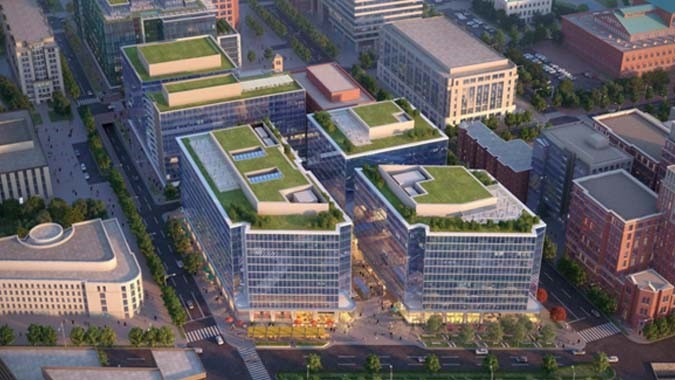Innovation of the Month:
Value Capture
Last week, we showed you how value capture enables local agencies to improve roadways and reduce project backlogs. Did you know that value capture techniques can also help private developers fund infrastructure improvements through joint development with public agencies?
In Washington, D.C., the $1.3 billion Capitol Crossing project is a 2.2 million-square-foot development that will span 7 acres over I-395. It is expected to create 8,000 permanent jobs and will generate an estimated $40 million in annual property tax revenue. Due to the value capture techniques used to finance the project, it will be paid for completely with private funds.
 Credit: Property Group Partners
The private-sector partner purchased the development rights, which is expected to generate as much as $120 million in payments to the District of Columbia, based on the future value of the property due to the project. The developer also spent $270 million for necessary utility relocations and reconfiguration of access ramps to/from I-395, among other items.
In addition to funding benefits, Capitol Crossing will reconnect two neighborhoods that were separated by the interstate in the late 1960s. Enhanced vehicular, pedestrian, and bicycle facilities will be installed above I-395, which will make traveling between Capitol Hill and the East End District much easier and more accessible.
To learn more about how you can partner with private firms through joint development or other value capture techniques, contact Stefan Natzke of the Federal Highway Administration Office of Planning, Environment, and Realty or Thay Bishop of the FHWA Center for Innovative Finance Support.
Pathfinder Helps California Town Improve Safety for Travelers
Truckee, CA, located near the Nevada border, sees major population influxes on weekends and holidays during the summer and winter seasons. This additional traffic can cause extreme vehicle and truck crowding during severe weather events.
Using Pathfinder principles, Truckee developed relationships with the National Weather Service to obtain and discuss severe weather forecasts, warnings, and watches ahead of major weather events. At the same time, the town fostered relationships with District 3 of the California Department of Transportation for insights related to I–80 operations and traffic. During severe weather events, the town uses these relationships to create a cohesive, coordinated message to reduce confusion and ensure safety for travelers.
Using Pathfinder has resulted in improved operations for the town year-round. It better allocates resources, mitigates known problem areas, operates more effectively with fewer motorists on the roads, reduces environmental impacts, and enhances safety through generally better road conditions. In addition, the town also reports enhanced public trust and improved public relations between travelers and the town.
For more information on Pathfinder or other ways to make your roads more weather-savvy, please contact Ray Murphy of the FHWA Resource Center.
EDC-5 Baseline Report Now Available
|